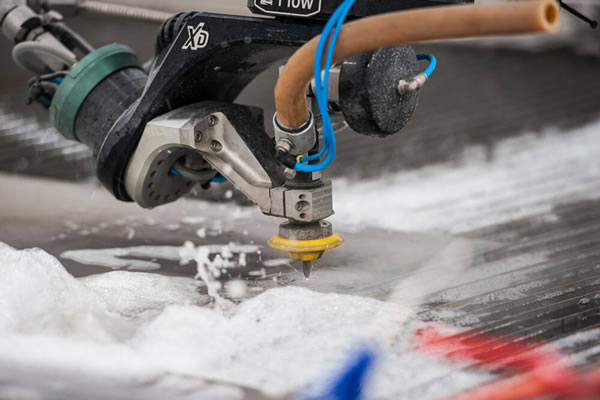According to foreign media reports, materials scientists at the Russian National University of Science and Technology (NUST MISIS) demonstrated a new technology that can use new raw materials to make aluminum-based composites. This raw material is a very promising composite powder that can be used for 3D printing. Lightweight, durable shells used in airplanes and automobiles. Compared with similar raw materials, the new method improves the performance uniformity and hardness of composite materials made by 3D printing by 40%.

(Image source: Russian State University of Science and Technology)
Aluminum-based composite materials are advanced materials with unique advantages. Their advantages include light weight, high strength, low thermal expansion coefficient and excellent wear resistance, and can be used in the automotive, aerospace and defense industries.
All the above properties of this material are due to its chemical composition and a special production method-the use of selective laser melting (SLM) technology for 3D printing. As a result, the composite material consists of spherical aluminum particles hardened by ceramic additives or coated with aluminum oxide.
Alumina is one of the best enhanced (hardening) additives to improve the mechanical properties of aluminum composites. In particular, the author of the study proved in experiments that compared with aluminum without additives, alumina can be used to 3D printed composites The strength is increased by 40%. Therefore, at high temperatures, alumina can make the composite material powder have better heat resistance. Compared with common ceramic additives, alumina also increases the stability of the powder composition, making the material particularly suitable for aircraft manufacturing.
Scientists at the Russian National University of Science and Technology have developed a new method of oxidizing aluminum by hydrothermal method to form a certain thickness of reinforced (hardened) oxide film on the surface of aluminum particles. In other words, on the surface of each pure aluminum spherical particle, a "package" is formed, that is, an aluminum oxide layer with a certain thickness. In terms of characteristics, this aluminum composite material is particularly suitable for advanced additive manufacturing (SLM technology).
Alexander Gromov, the project leader and professor at the National University of Science and Technology, said: “The technology is based on the so-called in-situ method, which creates a composite structure inside each particle. The original aluminum powder (purity 99.85%) is placed in an autoclave After 30 minutes, it was partially oxidized by the hydrothermal method. As a result, an oxide layer with an alumina content of 10% to 20% was formed on the surface of the aluminum powder particles. Finally, the powder was heated at 150 to 600 degrees Celsius."
The main advantage of this method is that the obtained powder particles have high activity and uniform overall performance, which is also unattainable in preparing aluminum-based composite materials by other methods, especially the method of adding ceramic fillers to molten aluminum. At present, the team has tested the composite materials obtained under additive manufacturing conditions. (Yu Qiuyun)
Linear Alkylbenzene Sulfonic Acid
Washing Raw Materials,Daily Chemical Raw Materials,Bleaching Agent Raw Material,Linear Alkylbenzene Sulfonic Acid
XINGZHILIAN BIOLOGICALR&D CO.,LTD , https://www.xzlsdslds.com
![<?echo $_SERVER['SERVER_NAME'];?>](/template/twentyseventeen/skin/images/header.jpg)